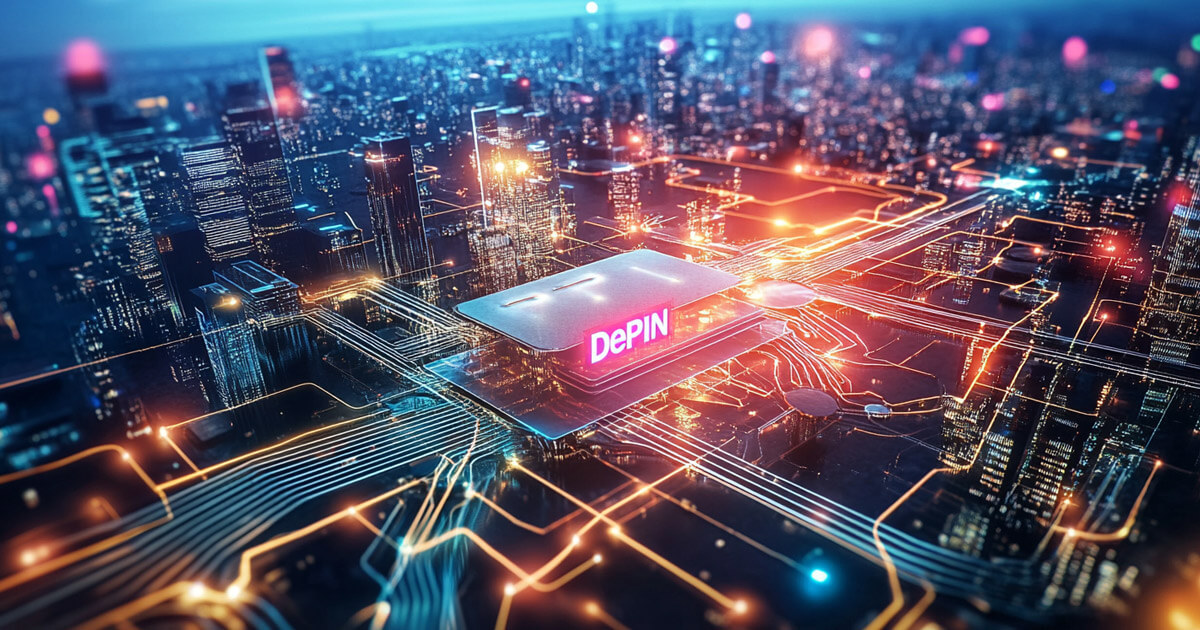This year’s Bitcoin halving and subsequent drops in network activity have once again put pressure on miners’ profit margins. With block rewards cut in half and reduced revenue from transactions, many operations are desperate for creative ways to remain viable.
But there may be an elegant solution hiding in plain sight—one that could simultaneously bolster miners’ bottom lines while fueling the next wave of AI innovation.
The key lies in the burgeoning world of Decentralized Physical Infrastructure Networks, or DePIN. These blockchain-based systems create marketplaces for real-world resources: computing power, storage, and bandwidth. For Bitcoin miners with excess capacity, DePIN platforms offer the opportunity to monetize idle GPU resources by making them available to AI researchers and developers.
An AI startup developing a new natural language processing model can rent this computing power at rates significantly lower than those offered by centralized cloud providers, providing a new revenue stream for miners and opening up access to high-performance compute.
The AI Gold Rush and the GPU Shortage
The timing couldn’t be better. As artificial intelligence capabilities explode, the demand for GPU computing power is skyrocketing.
Tech giants are scrambling to secure enough chips to train and run their increasingly sophisticated models. Smaller AI startups and researchers often find themselves priced out or unable to access the resources they need.
This is where Bitcoin miners step in. Many mining operations have built up significant infrastructure and expertise in managing large-scale computing resources. While their ASICs are purpose-built for Bitcoin mining, the surrounding systems for power management, cooling, and networking could be readily adapted to support GPU clusters as well.
Miners could essentially become decentralized cloud computing providers – offering their spare GPU capacity to AI developers on an as-needed basis.
This trend is already gaining traction, as evidenced by prominent miners Core Scientific signing a 12-year agreement and Hut 8 receiving a $150 million investment aimed at expanding AI capabilities.
However, realizing the full potential of this infrastructure shift requires more than just amassing computing power; it demands a framework that can efficiently connect and distribute these resources across a decentralized network.
Building the DePIN Infrastructure
To make this vision a reality, DePIN platforms that can connect GPU providers with AI developers are needed. The ideal solution offers true end-to-end decentralization, a tall order given the sensitive nature of AI workloads, but this is actually where blockchain platforms have a leg up over traditional cloud providers.
The key requirements for this are end-to-end security, native integration between blockchain and Web2 infrastructure, and on-chain data processing. Chain Key technology, in particular, is well-suited for this.
This enables any device, even a mobile phone or smartwatch, to verify the authenticity of data and computations. In a decentralized GPU marketplace, AI developers need assurance that their models are being run on legitimate hardware and that results haven’t been tampered with.
Full-Stack Decentralization: The Key to Success
Such networks are valuable only if they are fully decentralized and able to integrate directly with other blockchains and Web2 systems via HTTP outcalls.
Such interoperability—cross-chain smart contracts that orchestrate resources between Bitcoin miners and AI developers—allows DePIN networks to tap into a wider ecosystem of resources and users, namely Bitcoin’s robust network of miners while avoiding the centralized bottlenecks and single points of failure inherent in platforms like AWS or Google Cloud.
Instead, it would create an open, permissionless marketplace where anyone could contribute resources or tap into them as needed.
The Road Ahead
The potential benefits of this approach are manifold. For Bitcoin miners, it represents an opportunity for diversification and a near-term revenue boost.
For the AI community, this approach greatly expands access to vital computing resources in the short to medium term. It can accelerate innovation by allowing smaller players and researchers to access the resources they need at more competitive prices.
And for society at large, it furthers the crypto ethos of decentralization – wresting control of key infrastructure away from a handful of tech giants and distributing it across a global network of providers.
To be sure, there are challenges to overcome. Ensuring consistent performance and reliability across a decentralized network is no small feat. Miners would need to invest in additional hardware and expertise to effectively support AI workloads.
Given the rapid pace of AI model efficiency improvements and the enormous influx of capital into AI, the demand for high computing power may slow down over time. Adaptability and a clear-eyed view of market forces will be crucial.
The crypto industry has long promised to remake the world through decentralization. Now, through the marriage of Bitcoin mining and DePIN networks, we have a chance to deliver on that promise.


